Blue-footed boobies? I thought I heard him wrong.
Our guide repeated the phrase, while pointing at a group of birds flying not far overhead. We were on a small speedboat, 30 minutes off the coast of Loreto, in Baja California Sur, Mexico. The boat, chartered through Wild Loreto Tours, was headed for Isla Coronado, one of the five Islands of Loreto that dot the coast along the Gulf of California.
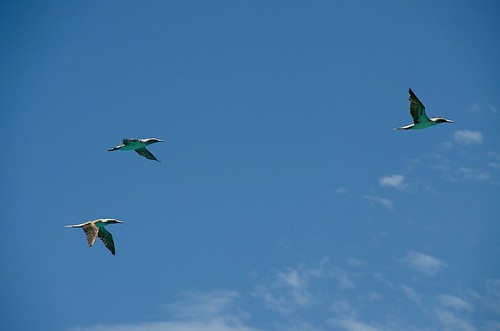
Last fall, I traveled to the Galapagos Islands, a group of islands off the Pacific Coast of Ecuador. It was a long and expensive journey from our home in Northern California, but it was worth it to see the unique Galapagos wildlife, many of which can only be found in this remote island chain.
Or so I thought.
Watching as the birds passed overhead, I recognized the boobies’ slim form and the turquoise shadow on their abdomen, proof that two bright blue feet were tucked up underneath the wings. After the first glance at the boobies’ quick, agile flight and a closer look at their deep turquoise feet and beak, they became one of my favorite birds.
Now here we were, in Baja California, Mexico–only a two-hour flight from Los Angeles–seeing this rare bird. How could it be so close to home?
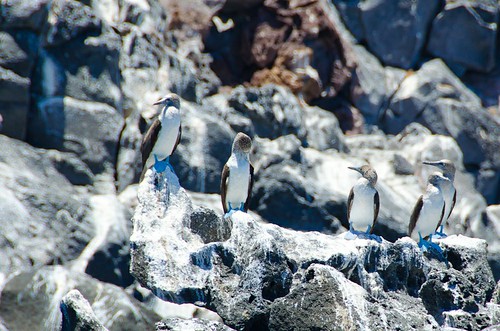
Little did I know this wasn’t the only “Galapagos” wildlife I would see here on Isla Coronado.
Within minutes our guide called out, “Frigatebird!” Again, I recognized the familiar angular wings and forked tail of a bird I’d only ever seen on the Galapagos Islands.
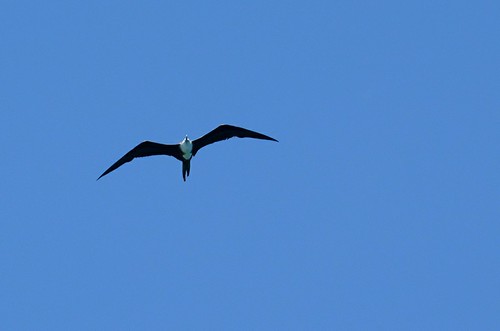
We went closer to shore to investigate a family of sea lions. We could get surprisingly close to them, and while they let us approach, they called to tell us not to come any closer. The experience made me remember a sea lion encounter I had in the Galapagos, and we heeded his warning.
As we neared the shore, I saw something else scurry by. A vibrantly colored, red, yellow, and blue Sally Lightfoot crab! One more strange but beautiful creature I thought only existed on the Galapagos.
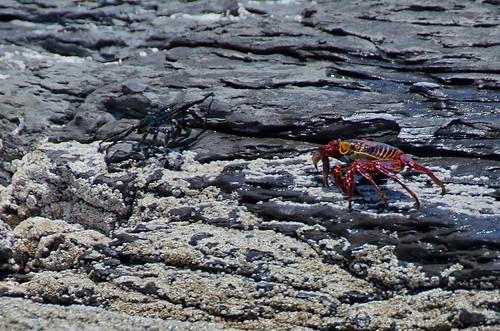
Other things you’ll see on the Islands of Loreto:
Wind-swept, volcanic land forms…
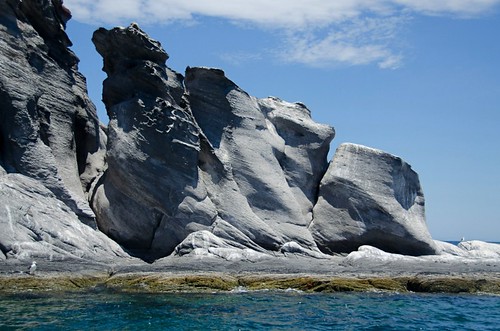
Pristine turquoise water with white-sand beaches…
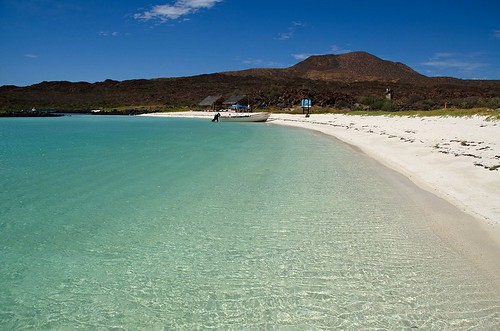
Snorkeling and other underwater activities take you into the Parque Nacional Bahia Loreto, an underwater national park that is home to over 800 species of marine life…
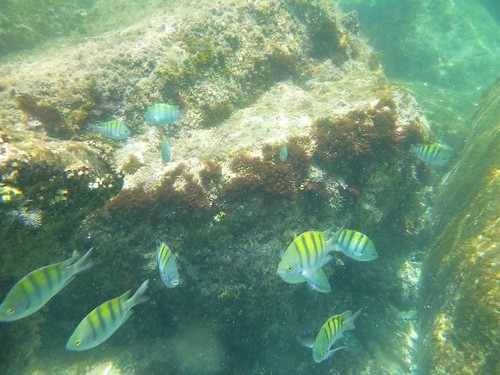
Beyond the islands, the Loreto region offers other great wildlife opportunities. In the winter season (December to early April), Pacific Grey Whales give birth on the Pacific side of Baja, just a 2 hour drive from Loreto. A friend of mine went whale-watching there just a few months ago and touched the whales over the side of the boat. The next time I go to Loreto I’ll be timing the trip so that we can go whale watching too.
Before visiting Loreto, I envisioned throngs of spring-breaking tourists and the endless sprawl that blankets the coast of Los Cabos. I didn’t know that just miles up the coast of Baja, the town of Loreto was such an exciting ecotourism destination in a relatively undeveloped region offering much of the wildlife I had traveled to Ecuador to see. I wondered how many other North American visitors to the Galapagos knew that there is so much unique wildlife so close to home. For West Coasters, in particular, Loreto is an easy weekend getaway.
I’m not suggesting that the Galapagos Islands are not worth visiting, because they certainly are. But for nature-loving travelers, the Islands of Loreto (the “Galapagos of North America”) offers an affordable and convenient way to connect with unique wildlife that many people on earth will never seen in person…. and it’s right in my backyard.
I was a guest of Villa del Palmar at the Islands of Loreto. Opinions and photos are my own.
Want to save this post? Click below to pin it on Pinterest:
Thank you for the great article. Those of us who live in Loreto know that this is as close to paradise as it can get. If you decide on visiting or simply want more info, please feel free to shoot me an email. Please know that you have a friend in Loreto.
Thanks, Dennis! I really look forward to going back. One day soon, I hope!
Thank you for this wonderful article about Loreto. My husband Peter and I live in Loreto Bay 9 months of the year. We love this jewel that is Loreto. The sea life is spectacular. The water is calm for swimming, snorkeling and kayaking. Going out at sunrise affords the spotting of mantra rays playing, dolphin swimming, many species of birds feeding and you can see the fish below in the clear waters. In some seasons it is a great place to kite board and wind surf. Hope to see you again, in Loreto. Ariel Klein, Loreto Bay Homes.
I can’t believe how beautiful this place is! I never heard of it before. Thanks so much for sharing
I hadn’t either, before researching this trip. Loreto was a wonderful surprise!
La UNESCO, reconoce única y exclusivamente, a Parque Nacional Marino Bahia de Loreto, como -El Acuario del Mundo- DESIGNACIÒN histórica, hecha por Cientìfico Explorador Jacques Cousteau, en el mes de Julio de 1983 en el Puerto de Loreto. (A continuación fragmento documento oficial de la UNESCO)
EL PARQUE BAHIA DE LORETO REPRESENTA UN EJEMPLO UNICO DEL PLANETA POR SU DIVERSA VIDA MARINA QUE CONTIENE EL 39 % DEL TOTAL DEL NUMERO DE ESPECIES DE MAMÌFEROS MARINOS DEL MUNDO Y UN TERCIO DEL TOTAL DE ESPECIES DE CETACEOS.
LA DIVERSIDAD Y ABUNDANCIA DE LA VIDA MARINA Y SUS ESPECTACULARES FORMAS SUBMARINAS Y CRISTALINAS AGUAS, LO VUELVEN UN PARAISO DENOMINADO “EL ACUARIO DEL MUNDO” Y SE LE COMPARA, CON LAS ISLAS GALÀPAGOS Y LA GRAN BARRERA ARRECIFAL AUSTRALIANA.
La Organización de las Naciones Unidas para la Educación, la Ciencia y la Cultura (UNESCO) promueve la identificación, protección y preservación del patrimonio cultural y natural de todo el mundo, considerado valioso para la humanidad.